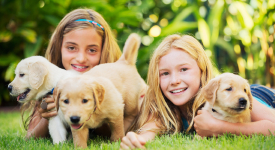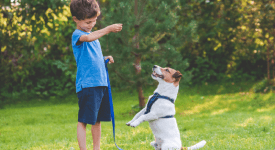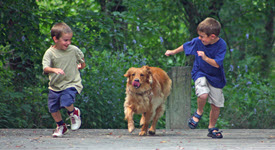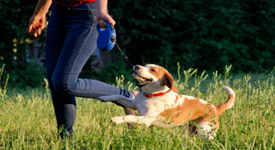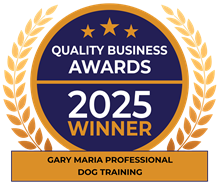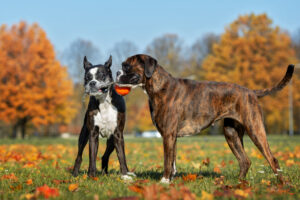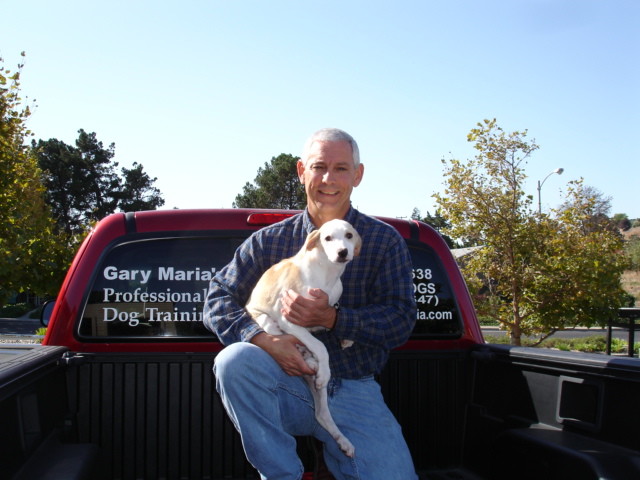Working on resource guarding takes patience and consistency, but it can be improved a lot with the right approach. I will cover working with a single dog as well as multiple dogs, in multi-dog households.
Key Principles to Manage Resource Guarding
-
-
- Safety is always first: Don’t put yourself or anyone else at risk. If your dog guards with intensity (e.g., snapping or biting), it’s a good idea to work with a professional trainer or dog behavior specialist.
-
-
-
- Do not punish the dog: Never scold or punish a dog for guarding. That just makes them more anxious and more likely to guard harder next time.
-
-
-
- Respect the dog’s signals: Growling is communication—if you punish it, the dog may skip the growl and go straight to biting later.
-
Key Steps to Take and What to Watch For
- Figure Out What the Dog Guards
-
-
- Food bowl, treats, toys, chews, space (like the couch), or people?
- Start with the least-guarded item and build up
-
- Make Human Approaches Predict Getting Good Things and Awards
-
-
- Start far enough away that the dog shows no guarding behavior
- Toss a super high-value treat (like chicken or cheese) as you approach, then walk away
- Repeat this over and over until the dog gets excited when you approach
- Slowly decrease the distance over sessions
- Eventually, try trading – offer a treat as you gently take the item, just for a second, then return it
-
- Teach a Solid “Trade” or “Drop It” Cue
-
-
- Practice with lower-value items first
- Say “Trade!” and offer a better item, such as a favorite treat
- When the dog drops the item, reward and give it back – or swap for something even better
- Keep it fun. It should not be a confrontation
-
- Control the Environment
-
- Manage triggers in the short term: don’t take bones away, don’t let kids near the food bowl, and so on
Resource Guarding in Multi-Dog Households
Multi-dog households can make things more intense between dogs. There are a few factors to understand.
-
- Competition: Even if resources are abundant, dogs might still feel pressure to protect what is theirs
- Lack of Clear Boundaries: If there are no predictable rules or feeding areas, a dog might feel the need to defend just in case
- History or Temperament: One dog might be naturally more possessive – or might have learned to guard from past scarcity (e.g.: being in a shelter)
- Over-arousal or Excitement: When dogs are hyped-up; for example during mealtimes or play, they can escalate guarding behaviors faster than usual
🚩Signs of Resource Guarding Toward Other Dogs
- Stiffening, glaring, or side-eyeing when another dog approaches
- Blocking access to toys, food bowls, or humans
- Growling, lip curling, or snapping
- Eating faster or hovering over items
- Getting snappy over YOUR attention
Our goal in re-training dogs who are resource guarding is to desensitize the dog or dogs that are in the same household. We need to change how the dog feels about a situation such as a person or another dog being near its food.
Desensitizing helps the dog to be less reactive to a given trigger, so it behaves in a more adaptable and positive way.
Handling Multiple Dogs Who Resource Guard
Follow the four steps outlined above in Key Steps to Take and What to Watch For.
Then practice the steps below.
Step 1: Work on resource guarding with humans first
- Get the guarding dog comfortable with people near their food or toys before introducing another dog into the mix.
Step 2: Reintroduce the other dog at a distance
- Have the guarding dog eating or chewing with the other dog far away (behind a gate or on-leash).
- Toss treats when the other dog appears – create positive associations.
Step 3: Gradually decrease the distance between the dogs
- Let both dogs eat in sight of each other but far apart.
- Only move closer over time as long as both dogs stay relaxed.
Important Tips
- Always go at the dog’s pace. Don’t rush stages.
- Keep your body language relaxed, no looming or sudden moves.
- Never take the food without giving something better.
- Consistency is key — practice daily in small sessions.
- Teach all family members how to interact during feeding.
